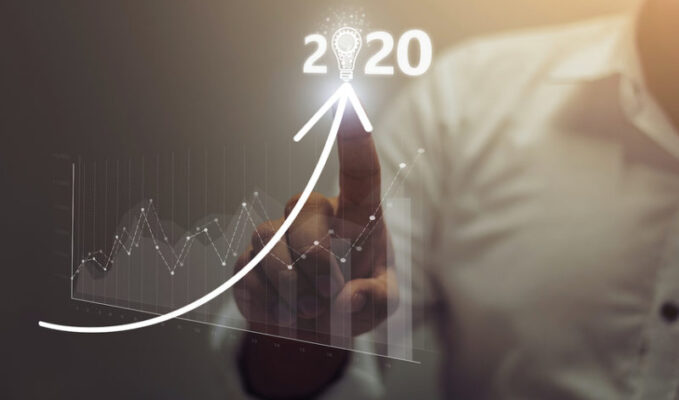Summary: The software automated testing trends for 2020 shall include technologies such as AI and ML, big data, and the Internet of Things, among others. The trends are likely to continue from the previous year and get consolidated further.
The quality of software has become the single most important element in ushering success for any enterprise. However, ensuring quality can be a big challenge and involves following the latest software automated testing trends. Also, with the advent of new technologies and apps having SMAC (Social Media, Analytics, and Cloud) interface, testing is not the same anymore.
The objectives of testing are guided by a slew of considerations. These include achieving faster time-to-market, delivering products based on customers’ feedback, and generating better ROI. Given the criticality of automated testing services, more and more enterprises are embracing the end-to-end shift-left testing methodology. Further, the emergence of Industry 4.0, driven by IoT and other technologies, has prefaced the role of software automated testing.
In the last few years, trends like Agile/DevOps have dominated the testing landscape. The year 2020 is likely to be the continuation (and consolidation) of the earlier trends, but with more sophisticated technologies, wider adoption, and better innovative solutions. Let us check them out.
The software automated testing trends to expect in 2020
Automation has continued to dominate the testing industry for the past few years. In fact, it has allowed the validation of various testing methodologies by using virtual users. Further, it can be extrapolated to test software incorporating new technologies such as AI and ML.
1. Artificial Intelligence and Machine Learning (AI and ML):
With intelligent devices generating humongous quantum of data, artificial intelligence and machine learning can be leveraged to draw business intelligence. These technologies make testing faster, smarter, and effective.
If earlier, AI and ML were leveraged to prioritize test cases, predict the quality of tests, or classify defects, among others, 2020 will see the inclusion of more testing areas. In fact, the forecast of investments in AI and ML testing is likely to reach a whopping $200 billion by 2025.
2. Rise in Cyber Security Testing:
The omnipresent and ever-growing security challenges concerning digital revolution have brought performance testing in 2019 w.r.t security to the fore. In fact, business stakeholders like the CIOs, CEOs, and CFOs have understood the gravity of the challenge. The thrust, therefore, in any test automation strategy is to offer total protection to the critical data. This can safeguard systems, databases, and the overall business from suffering losses or losing customer trust.
In the year 2020, DevSecOps will attract the traction of business stakeholders. In such a case, everyone in the organization shall be expected to be accountable in upholding security. Thus, the software application coming out of the SDLC will be more resilient to cyber threats. No wonder, the efforts to uphold cybersecurity will move a few notches higher.
3. Performance Testing and Performance Engineering:
If product testing had a strong element of performance testing in 2019, then 2020 will see a greater move towards performance engineering. In the latter, there is a collaboration among various processes and elements to deliver the highest level of quality. These include software, hardware, security, performance, usability, and configuration, among others. Since delivering superior customer experiences has become critical for the success of a product, then a move towards performance engineering is likely to deliver customer delight.
4. IoT Testing:
With automation becoming the leitmotif of the techno-driven world of ours, the use of IoT devices has been on the rise. According to an estimate by Gartner, the number of IoT devices with embedded software at their core may rise to 20.5 billion by 2020. Since smart systems are likely to drive the world of tomorrow, the embedded software inside systems needs to be validated for quality. For example, unless the sensors are validated for their quality in a self-driven automobile, the consequences can be catastrophic.
Internet of things security testing involves the testing of devices with embedded software. This is about ensuring device authenticity, security, data integrity, compatibility, performance, scalability, and usability. The challenges faced by IoT test engineers is monitoring communication between sets of software running on various device platforms and operating systems. The challenges in forming a test automation strategy for IoT mainly revolve around the lack of expertise in testing IoT functionality.
5. Big Data Testing:
The increasing use of digital devices is giving rise to big data. These are mostly needed to be processed in real-time to derive suitable insights including business intelligence. The usage of big data is seen across sectors like healthcare, banking, technology, retail, telecom, media, and many others. The processing of such data leads to the optimization of workflows and better decision making. Big data testing deals with a humongous quantum of disparate sets of data. As more companies embrace digital transformation, the possibility of data generated from various areas will increase. Thus, implementing an automated testing strategy around big data is likely to dominate the testing landscape in the year 2020.
Conclusion
As software becomes more complicated and interfaces with myriad third-party applications, software testing needs to follow suit. In the year 2020, automated testing will harness existing technologies as mentioned above to deliver high-quality products. To create new-gen products, enterprises should use the next level of testing trends in the year 2020.
Author Bio:
Hemanth Kumar Yamjala has 10+ years of experience in IT Services, predominantly Marketing, Branding, specializing in Digital. Currently a part of the marketing for Cigniti Technologies with functions such as leveraging digital marketing channels for lead generation and promotion.





